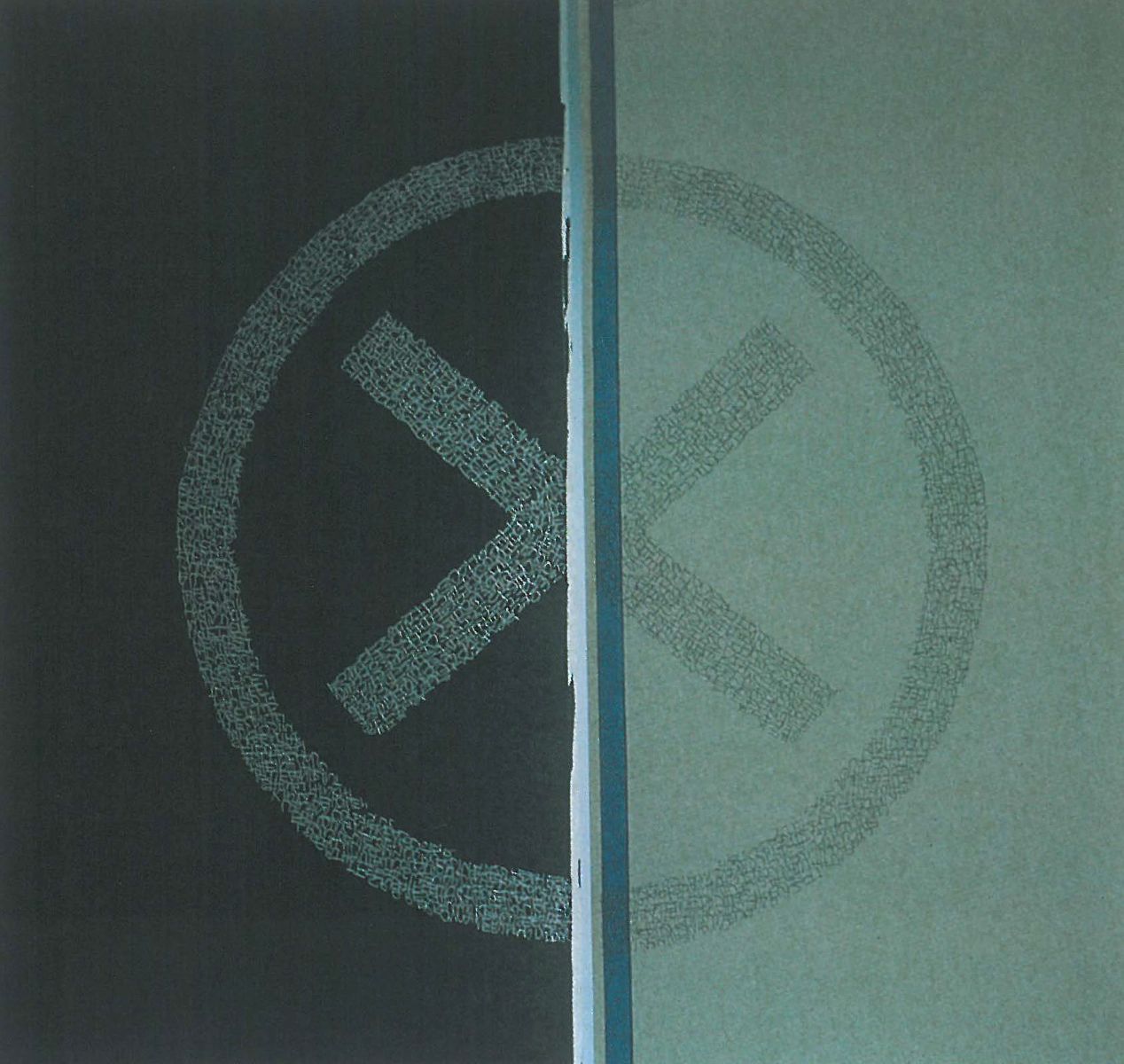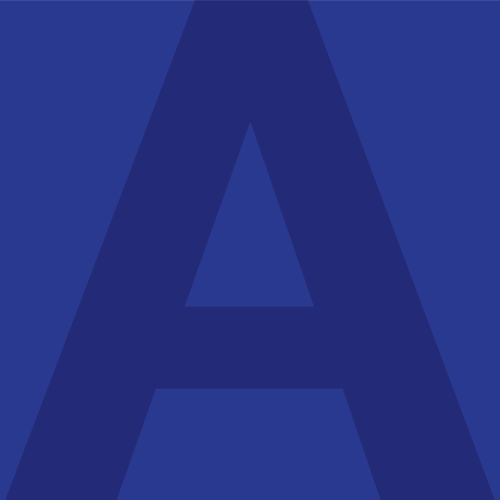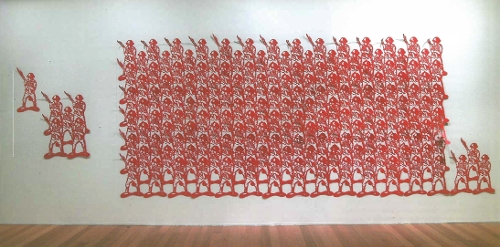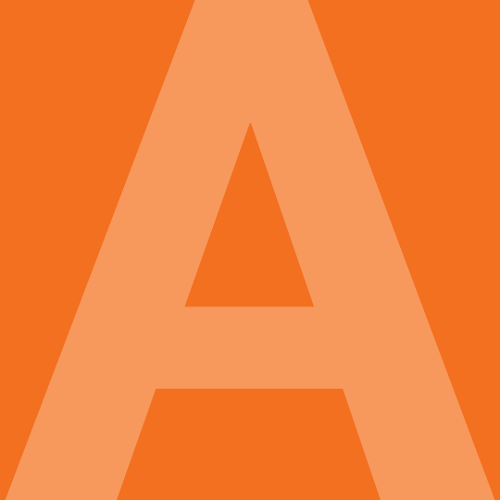
Few things can be as satisfying for an artist or a viewer than those moments when the most simple of means produces an art work of sophistication and elegance utilising a clear conceptual base expressed through apparently simple formal devices.
Fiona Lee's installation, Hard Copies, at FOYeR Installation Space, was such an experience. Sadly this was the penultimate show at this artist-run space. FOYeR is no more and its passing will be a great loss. This small gallery/installation space has provided untold numbers of emerging artists with their first solo opportunity to show work in a high profile public space. Over the years it had become a key component of the Tasmanian contemporary art scene and Julie-Ann Hall its founder and Director a key person within that scene.
Fiona Lee has spent most of her artistic life as a printmaker. She has, as all printmakers must, learned how to sublimate that moment of completion and realisation to a demanding and often time-consuming process. The processes of printmaking conspire against direct expression in most cases. They require that the visual form is realised and resolved at specific points in a process. Then there's the often hard and sequential slog to reach finality. The possibility of a work becoming laboured through such a process is ever-present.
The impression upon entering the space is of a quiet, almost Eastern ambience, redolent of a Japanese interior. The plain white walls are hung at regular intervals with a translucent material, alternating in strips of charcoal and cream, edged subtly in red. Each has centrally placed a simple motif, a circle, a cross, or a chevron. These shapes are in reverse on both sides of every pair of hanging strips.
This impression shifts on closer inspection but the simple elegance of the work is not undermined by the revelation of what the material is and whence the designs derive. Lee has used long strips of carbon paper and worked each by writing in dense-packed, (essentially illegible) script, directly on to the carbon paper. This script is a rambling text about urban issues and glimpses of meaning reward the attentive viewer. The process employed produces a positive / negative and the major shapes are developed through the spidery thin text. The text, like the main shapes, deals with the rush of urban life. It addresses the directional signs which govern our activity in public places, such as road signs and others derived from parking meters and manhole covers. Like the positive / negative formal aspects of the work, there is a curious irony at work here. Despite the messages of control and the implication that order must be maintained if this metropolis is to function effectively, the effect is calming, even meditative. The irony strengthens the message, as if it has been forced to comply in producing an opposite effect; elegant, wry and intelligent. Lee's background in printmaking is referred to constantly yet is undercut too because this direct practice produces one copy which is nonetheless an original as well. It is a 'one hit' process, like watercolour, with no room for reworking or revision.
Lee's painstaking writing is devoted to a single object and uses an impoverished and impermanent material. In printmaking the one-off is rare, copies or multiples are one of its primary rationales, (justifying the workload of preparation). While Lee's tongue is in her cheek, she is nonetheless entirely serious about her 'busman's holiday', using the opportunity to raise some interesting questions about the nature of her primary activity. It is as if the artist is enjoying these dichotomies and is revelling in the chance to engage in an activity which ironically addresses both its underlying concept and methodology both playfully and critically.
FOYeR Installation space has been about just these adventures, providing a chance for artists to engage in speculative and experimental activity and to explore ideas outside their usual zones of practice. With the passing of FOYeR it remains unclear at this stage whether a space will emerge in Tasmania to fill this need. How pleasant is was to order the best coffee in Hobart and then engage with new, exciting work in an atmosphere that was totally unlike an art gallery yet which was so appropriate to the sorts of investigations and speculations which were encouraged there.












